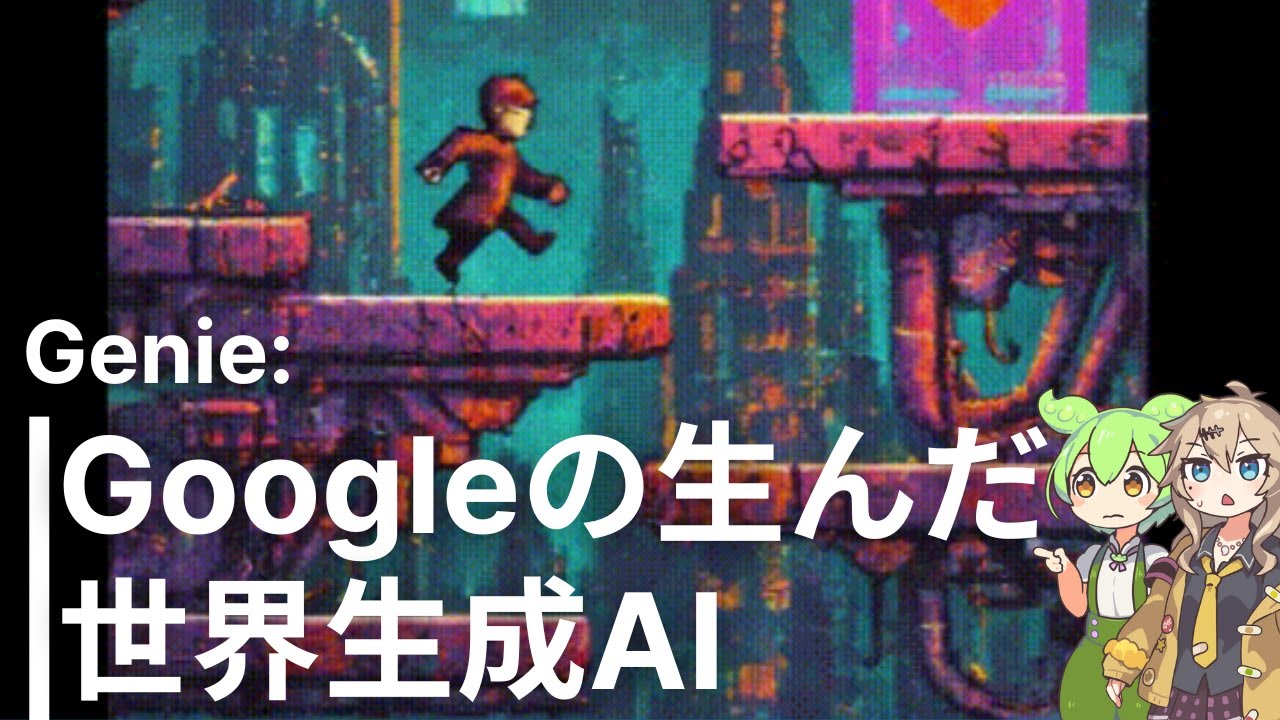Day 29/75 Build Text-to-Video AI with LLM [Explained] OpenAI SORA Stable Diffusion VideoPoet Runway
Summary
TLDRこのビデオでは、OpenAIとGoogleが開発したテキストからビデオを生成するAI技術、特にOpenAIのSoraとGoogleのVideo Poetについて紹介しています。テキストからビデオへの変換の仕組み、それがテキストから画像への変換とどう異なるか、そしてその分野での研究論文についても触れています。また、AIがフレームごとの画像を生成し、それらを組み合わせてビデオを作成する過程や、この技術の背後にある計算上の課題とその解決策についても説明しています。さらに、安定拡散モデルを用いたビデオ生成のデモンストレーションを行い、視聴者が自身でテキストからビデオへのAIアプリケーションを構築する方法を案内しています。
Takeaways
- 🚀 OpenAIが「Sora」というテキストからリアルなビデオを生成するAIをリリースした。
- 🔍 テキストからビデオを生成するAIの仕組みは、テキストを分析し、画像のシーケンスを生成してビデオを作成する。
- 📖 テキストから画像へのモデルとテキストからビデオへのモデルの違いについて学ぶことができる研究論文が存在する。
- 🌐 Googleも「Video Poet」という自社のテキストからビデオを生成するAIを開発している。
- 💡 テキストからビデオへの変換は、フレーム間の時間的および空間的な依存関係を管理することで計算上の課題がある。
- 🤖 過去2年間で、VQ-GANやXMC-GANなど、多くのテキストから画像への言語モデルが登場している。
- 🎨 新しいAIモデルでは、GPT-3のようなトランスフォーマーアーキテクチャを利用して高品質な画像やビデオを生成している。
- 📚 「FAKIE」などのモデルは、プロンプトのシーケンスに基づいて任意の長さのビデオを生成できるが、公開されていない。
- 🌟 テキストからビデオへのモデルは、現在、Diffusionモデルや「Runway」と「Text to Video Zero」によって支配されている。
- 👩💻 Pythonコードを使って、Diffusionベースのモデルを使用し、プロンプトからビデオを生成する方法を示す。
Q & A
Sora AIとは何ですか?
-Sora AIはOpenAIによって最近リリースされた、プロンプトからリアリズムのある画像やビデオを生成できるテキストからビデオへのAIです。
GoogleのテキストからビデオへのAIの名前は何ですか?
-GoogleのテキストからビデオへのAIは「Video Poet」と呼ばれています。
テキストからビデオモデルはどのように機能しますか?
-テキストからビデオモデルは、与えられたテキストを分析し、それに基づいて複数のフレームを生成してビデオを構築します。
テキストから画像モデルとテキストからビデオモデルの主な違いは何ですか?
-テキストからビデオモデルは、テキストから画像モデルに比べて、時間的な依存関係を考慮して複数の連続するフレームを生成する必要があり、より高い計算コストがかかります。
テキストからビデオ生成における主な課題は何ですか?
-主な課題には、高い計算コスト、高品質なデータセットの欠如、ビデオの説明の曖昧さが含まれます。
「Faki」とは何ですか?
-「Faki」は、プロンプトのシーケンスに基づいて任意の長さのビデオを生成できる高度なテキストからビデオへの生成モデルですが、公には利用できません。
「Runway」と「Text to Video Zero」の重要性は何ですか?
-これらは、テキストからビデオ生成業界をリードする、革新的なモデルであり、高品質で文脈豊かなビデオ生成に寄与しています。
テキストからビデオのAIモデルを使用する際の主な利点は何ですか?
-主な利点には、ユーザーがプロンプトを通じてリアリスティックなビデオを簡単に生成できること、さまざまな用途に応じたカスタマイズ可能なビデオ生成が可能であることが含まれます。
テキストからビデオ生成における「Transformerアーキテクチャ」の役割は何ですか?
-Transformerアーキテクチャは、テキストからビデオ生成の研究で採用され、より高品質な画像生成に貢献しています。
テキストからビデオ生成において、なぜ高品質なデータセットが重要なのですか?
-高品質なデータセットは、AIがより正確でリアリスティックなビデオを生成するための学習素材を提供するため、重要です。
Outlines

This section is available to paid users only. Please upgrade to access this part.
Upgrade NowMindmap

This section is available to paid users only. Please upgrade to access this part.
Upgrade NowKeywords

This section is available to paid users only. Please upgrade to access this part.
Upgrade NowHighlights

This section is available to paid users only. Please upgrade to access this part.
Upgrade NowTranscripts

This section is available to paid users only. Please upgrade to access this part.
Upgrade NowBrowse More Related Video

Sora Release Date Deep Dive

Microsoft's new "Embodied AI" SHOCKS the Entire Industry! | Microsoft's Robots, Gaussian Splat & EMO

New FREE AI Video Generator & Feature Length AI Films!

【AIで画像が喋る】リップシンクが可能なサービス3つを比較【EMOっての凄い】

【緊急】Apple、禁断の契約。ChatGPTを統合。今後どうなる?(OpenAI・アップル・iPhone)

Google復活の狼煙?世界生成AI「Genie」がやばすぎた
5.0 / 5 (0 votes)
